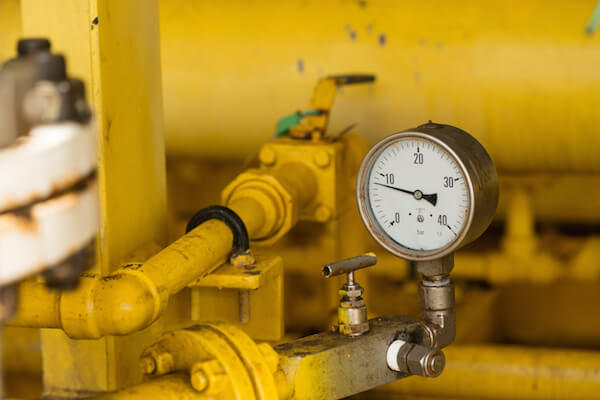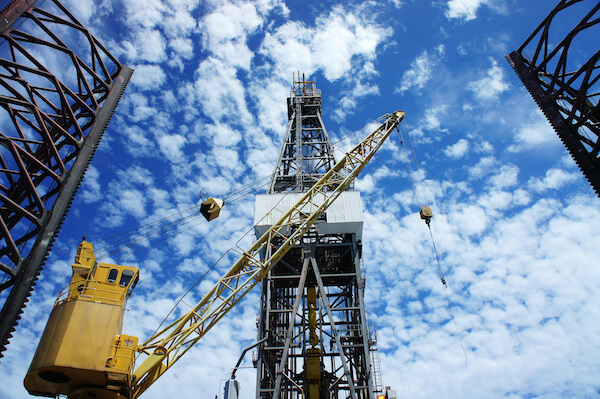Tag Archive for: Petroleum
Oil Bears Dominate Market as Doubt Grows Over Output Limits
/NewsThe longer OPEC and other producers talk about a ceiling on crude output, the more doubts grow in the market.
Money managers increased wagers on falling prices by the most in three months as a meeting between Russia and Saudi Arabia ended without specific measures to support prices. Producers have pledged to discuss action in Algiers later this month.
“The more they talk, the less people listen,” said Michael D. Cohen, an analyst at Barclays Plc in New York. “If you look at the actual statements from the Saudis, there’s not a lot of enthusiasm. They’re saying that either they don’t believe a substantial intervention is needed right now or that if other producers want a freeze, they’ll go along.”
Saudi Arabia’s Energy Minister Khalid Al-Falih said on Sept. 5 that he’s optimistic producers will agree to cooperate in Algiers. He spoke after meeting with his Russian counterpart, Alexander Novak, at the G-20 summit in China. Novak said that a freeze in production by OPEC and Russia would be the most effective way of stabilizing the market.
The International Energy Forum, including 73 countries that account for about 90 percent of the global supply and demand for oil and natural gas, will meet in the Algerian capital Sept. 26-28. The Organization of Petroleum Exporting Countries will hold informal talks on the sidelines of the gathering.
Parsing Words
“Everyone is sifting for clues on whether OPEC will reach an agreement to limit production or leave it uncapped with the potential for higher output,” said Tim Evans, an energy analyst at Citi Futures Perspective in New York. “At this point we’re waiting for the outcome of the talks. A lot of people are standing to the side while others are building positions with a specific view in mind.”
A freeze deal between OPEC members and other producers was proposed in February. A meeting in April ended with no accord because Iran refused to join, while Saudi Arabia insisted that its rival take part. Iran has said it’s too soon to cap output as it’s still restoring production curbed by sanctions.
Speculators bolstered their short position in West Texas Intermediate crude by 34,954 futures and options during the week ended Sept. 6, according to the Commodity Futures Trading Commission. Bets on rising prices declined.
Prices Drop
WTI futures dropped 3.3 percent to $44.83 a barrel in the report week and prices lost 1.6 percent to $45.15 at 9:18 a.m. New York time.
Futures surged Sept. 8 after the Energy Information Administration reported U.S. crude inventories fell 14.5 million barrels in the week ended Sept. 2, the biggest drop since January 1999. Prices retreated the next day as speculation grew the supply drop was a one-off caused by a tropical storm that disrupted imports and offshore production.
Money managers’ short position in WTI climbed to 130,274 futures and options. Longs fell 1.9 percent. The resulting net-long position dropped 19 percent. Net-long positions in Brent crude decreased by 37,226 contracts, according to ICE Futures Europe.
In other markets, net-bullish bets on gasoline declined 32 percent to 11,148 contracts. Gasoline futures dropped 9.1 percent in the report week. Net-long wagers on U.S. ultra low sulfur diesel tumbled 56 percent to 9,840 contracts. Futures declined 4.3 percent.
Gambling Momentum
“There’s a lot of gambling taking place,” said Stephen Schork, president of the Schork Group Inc., a consulting company in Villanova, Pennsylvania. “A lot of money managers are betting that a bottom has been put in but I’m skeptical.”
U.S. crude stockpiles remain at their highest seasonal level in more than 20 years. Refineries plan maintenance programs for September and October when fuel demand is lower. Over the past five years, refiners’ thirst for oil has dropped an average of 1.2 million barrels a day from July to October.
“The market will probably yo-yo in a range through the maintenance season but there’s downside risk,” Schork said. “If demand isn’t a strong as hoped and crude inventories rise, the market could take another leg lower.”
Copyright: Bloomberg
Mexico Said to Begin Quietly Hedging 2017 Oil Price in June
/NewsMexico started quietly buying contracts to lock in 2017 oil prices when futures were near their peak in June, signaling the start of what has in prior years been the world’s largest sovereign petroleum hedge, according to people familiar with the deal.
The Latin American country bought put options, which give it the right to sell crude at a predetermined price, in June and July, earlier than the usual period of late August to late September, said the people, who asked not to be identified because the process is private.
Brent crude, the global benchmark, peaked at nearly $53 a barrel in early June. Since then, prices have declined about $10 a barrel as the outlook for the global economy soured and OPEC countries boosted production. The people didn’t say how much Mexico was able to hedge before prices fell back.
In response to a list of e-mailed questions, the Mexican Finance Ministry’s press office declined to comment on the status or progress of Mexico’s oil hedge negotiations.
The Latin American country has spent an average of almost $1 billion a year over the past decade buying put options through deals with banks that in the past have included Goldman Sachs Group Inc., Citigroup Inc., JPMorgan Chase & Co., Morgan Stanley, BNP Paribas SA, Barclays Plc and HSBC Holdings Plc, according to government documents. Mexico’s annual hedge is the largest undertaken by a national government and often roils the market.
Mexico and its bankers try to keep the hedge under wraps as long as possible, to avoid others front-running the trade and making the insurance more expensive. In the past two years, however, some details of the hedge emerged because of new regulations introduced in the U.S. with the Dodd-Frank Act.
Dodd-Frank
The rules forced U.S. banks to report some details of the deal through public swap data repositories. But this year not a single deal bearing the marks of the Mexican hedge has emerged, and two of the people familiar with the program said Mexico and its bankers were using non-U.S. branches of the banks to bypass the reporting rules.
The move to hedge 2017 oil prices comes as Mexico stands to take in about $3 billion from this year’s hedge, which was put on from June to August 2015, if prices remain around current levels. That follows last year’s record payout of $6.4 billion.
Despite Mexico’s hedging success — it received $5 billion in 2009 after oil prices plunged — few other commodity-rich countries have followed suit. Ecuador hedged oil sales in 1993, but losses triggered a political storm and the nation never tried again. More recently, oil importers Morocco, Jamaica and Uruguay have bought protection against rising energy prices.
Copyright: Rig Zone
Safety Investment Remains Resilient Despite Downturn
/NewsOil and gas companies are continuing to invest in safety research despite the current oil price downturn, DNV GL representatives told Rigzone during a recent trip to the firm’s Spadeadam testing and research facility in Cumbria, England.
“Business is tough in the oil and gas sector but committed customers are still investing in safety improvement. They’re still conducting research into major hazards,” said Gary Tomlin, DNV GL UK’s vice president of safety and risk.
Naturally, the level of this investment was slightly hampered by the drop in crude prices, but investment has started to increase over the last couple of months.
“We saw a hiccup and to be honest, it’s inevitable. When the oil price drops from $110 a barrel to $27, you’re kidding yourself if you’re not going to see a hiccup,” said Hari Vamadevan, DNV GL – Oil & Gas’ regional manager for the UK and West Africa.
“We’ve seen a pickup I would say over the last couple of months … oil recovery to $50 has helped a little bit, I think there’s positive cash flows for some companies, but many companies haven’t stopped [investing],” he added.
Investment in this type of research is expected to rise even further over the not too distant future, as the oil price achieves an anticipated rise and oil and gas firms gain more access to expendable income.
From an industry perspective we think … we’ll see an upturn 2017-2018,” said Tomlin. “I think that we’ve plateaued. We are a cyclical oil and gas industry … I think we’ve hit the low point, but we do need to be aware that we still need to control costs,” said Vamadevan. “I think companies will become profitable at $50 and $60 per barrel, and as the price rises I think there will be more investment. So I am hopeful that we will see more activity going forward,” he added.
Oil, Gas Safety Testing ‘Critically Important’
Oil and gas major hazards testing and research was described as critically important by Tomlin, who outlined the significance of Spadeadam for the hydrocarbon sector.
“It’s a unique facility worldwide. There are other facilities like this, but none that do the breadth of the work we do, so it’s something we’re incredibly proud of. The work we do here is of critical importance,” said Tomlin.
DNV GL Spadeadam Testing and Research is designed to carry out full-scale hazardous trials and simulate real-world environments. Situated in 120 acres (50 hectares) of Ministry of Defence land in the north of England, it offers the opportunity to test equipment, components, products, techniques and processes, and to provide data to validate computer models.
aff at Spadeadam have recreated a number of major accidents at their facility – ranging from the Piper Alpha platform explosion to the Buncefield oil storage terminal fire – to find out exactly what went wrong and help prevent future incidents in the oil and gas industry.
“We’re undertaking research here that helps … [oil and gas companies] understand hazards that they manage in their facilities, so that they can take measures to limit the risk to their people and their infrastructure,” said Tomlin. “We get people to experience large scale fires and explosions so that they can see and feel the power of these events. They can’t get that anywhere else in the world.”
Most safety lessons in the oil and gas sector come from real world events, said Vamadevan, who highlighted how experiences of this nature can be more useful than theoretical work.
“If you … felt a jet fire, you experience what happens in an explosion, it means you understand it much better than reading in a textbook, seeing a colour contour on a map or seeing a percentage,” Vamadevan told Rigzone.
Copyright: Rig Zone
Russia’s giant Vankor oilfield reaches peak production level: ONGC
/NewsRussia’s giant Vankor oilfield, where Indian state oil firms are acquiring a significant stake, has reached peak production level, but technology to increase oil recovery will optimise the output and delay its decline, the head of ONGC’s overseas arm said.
Indian state firms hope to get 10.5 million tonne of crude oil from Vankor once deals are completed to acquire 49.9 % in Russia’s second-largest oilfield, whose output of 21million tonne a year is about the same as ONGC’s entire production from all its Indian fields. Rosneft had announced in March last year that Vankor’s output would decline slightly from the plateau level of 22 million tonne a year.
“We had entered at the peak production level, and as it happens in all oil fields, this field too will undergo a decline. But with the application of enhanced oil recovery techniques, the decline can be delayed and production optimised,”
ONGC announced a deal to buy 15% stake in the Vankor last year, and is in talks to raise that to 26%. This month, a consortium of Indian Oil Corporation, Oil India and Bharat Petroleum struck a deal to acquire 23.9% in Vankor. Official sources said ONGC paid $1.27 billion, while the consortium spent $2 billion for the bigger stake, giving the same valuation to the giant field.
Last week, Rosneft said the “achieved evaluation” of the Vankor project was $3.3 per barrel of reserves. Recoverable reserves of Vankor, the largest field commissioned in Russia in the last 25 years, stood at 361 million tonne of oil and condensate and 138 bcm of gas as of January this year.
India and Russia have intensified energy engagement over the past year.
Copyright: The Economic Times
OPEC’s Stable Market Outlook Points to Status Quo at Meeting
/NewsOPEC kept forecasts for global oil supply and demand unchanged in its last monthly assessment before members meet to review the market.
The 13 nations of the Organization of Petroleum Exporting Countries pumped 32.44 million barrels a day in April, slightly less than will be required to meet demand in the third quarter. Production rose as gains in Iran and Iraq compensated for losses in Nigeria and Kuwait. Investment by the global oil industry through 2018 will slump to less than half the amount spent from 2012 to 2014 following the collapse in prices, OPEC said.
Oil prices have rebounded more than 75 percent from the lows reached in February as U.S. shale production falters, signaling that Saudi Arabia’s strategy to re-balance oversupplied world markets is taking effect. OPEC, which failed to complete an accord with non-members last month on capping output, has no current plans to revive supply limits when ministers meet on June 2, six delegates said on May 4.
“We shouldn’t expect any freeze and definitely not any cut because OPEC sees things are improving from a fundamental point of view,” said Torbjoern Kjus, an analyst at DNB ASA in Oslo. “The structural decline based on lower investment is starting to show up in numbers for non-OPEC. That damage is done, even if prices recover in the second half.”
April Increase
OPEC production increased by 188,200 barrels a day last month to 32.44 million, according to the report. While the group’s supply has typically exceeded the required amount in recent months, April output is about 380,000 barrels a day below the 32.8 million that OPEC estimates will be needed in the third quarter. That potential shortfall is a further indication the organization’s policy is working.
Global oil demand will increase by 1.2 million barrels a day, or 1.3 percent, this year to 94.18 million a day, according to the report. Supplies from outside the group will shrink by 740,000 barrels a day to 56.4 million.
“A return to balance is a shared interest among consumers and producers alike,” the group’s Vienna-based research department said in the monthly report.
Font: Bloomberg
The Importance of Lloyd’s Market Within the Energy Reform
/Our CoreThe iconic Lloyd’s building in London is one of the most emblematic and important places for the insurance industry and it is commonly known as the birthplace of marine insurance throughout the world. It is where vessels, oil rigs and the most complex drilling and construction projects both on land and sea, are protected.
By: Paulina Meza Photo: NRGI Broker

e wanted to enter the world of the petroleum risk assurance, that is why we interviewed Graciela Alvarez Hoth, CEO of NRGI Broker in the Lloyd’s building, in front of the iconic bell that sounds when an important event happens in this market. For some thirty years, Graciela Alvarez has specialized in the placement of insurance and re-insurance coverage of intricate oil related activities for various national and foreign companies.
When asked about the origin of Lloyd’s she replied … “It all started in the Edward Lloyd’s coffee house, as the birthplace of marine insurance during the lat 1600’s where traders and merchants would meet to insure their vessels and cargoes. Today the latest Lloyd’s building is still the focal point of the British insurance industry, but the merchants and traders have been replaced by the world’s most prestigious brokers and solvent insurers but still meeting in a single market place, under the Lloyd’s Franchise.
It is in Lloyd’s where we place the reinsurance through one of the companies of Grupo Vitesse, its reinsurance broker specialized in the full spectrum of risks as required by the energy industry in Mexico, an activity that nowadays has a high importance due to the global best practices which will become obligatory for all companies and corporations involved with contracts within the Energy Reform in our country.
Our expertise in the design of comprehensive insurance programs to cover the risks assumed by companies in the oil fields, and complex activities performed daily in this industry have allowed us to successfully face the moment of truth, when you have to attend a major claim, highlighting and demonstrating the importance of being well insured.
“The result of working with professionalism, efficiency, passion and loyalty over the years in the oil industry, has given us the expertise and capacity to respond as we enter a new era, not only to oil companies, but also to advise companies in all sectors of the energy market be it renewable or traditional.“
In NRGI Broker we have the commitment to exceed excellence in service, it is our best guarantee to meet the expectations of the most demanding customers who will need support in order to fulfill one of the most important requirements being established within the Energy Reform – being the best global practices in insurance”. Alvarez Hoth emphasized.

Latest News
 Breaking Barriers and Building the Future18 March, 2025
Breaking Barriers and Building the Future18 March, 2025 Fundamental factors to strengthen Pemex12 August, 2019
Fundamental factors to strengthen Pemex12 August, 2019 Offshore Project Development: The Road to First Oil26 July, 2019
Offshore Project Development: The Road to First Oil26 July, 2019






